The 11 Best Castles to Visit in England
The Best Castles to Visit in England
Castles evoke thoughts of fairytales, knights in shining armor, romance, scandals, and political intrigues. England is home to hundreds of castles that have stood for centuries. From fortresses to regal residences, England’s castles are bastions of history, culture, priceless furniture, and objets d’art. Within the walls of these castles, Kings, Queens, Dukes, Dutchesses, Lords, and Ladies have played an integral part in shaping England’s way of life. We have put together a list of the best castles to visit in England. Each one offers a unique perspective that is worthy of an epic Shakespearean play.
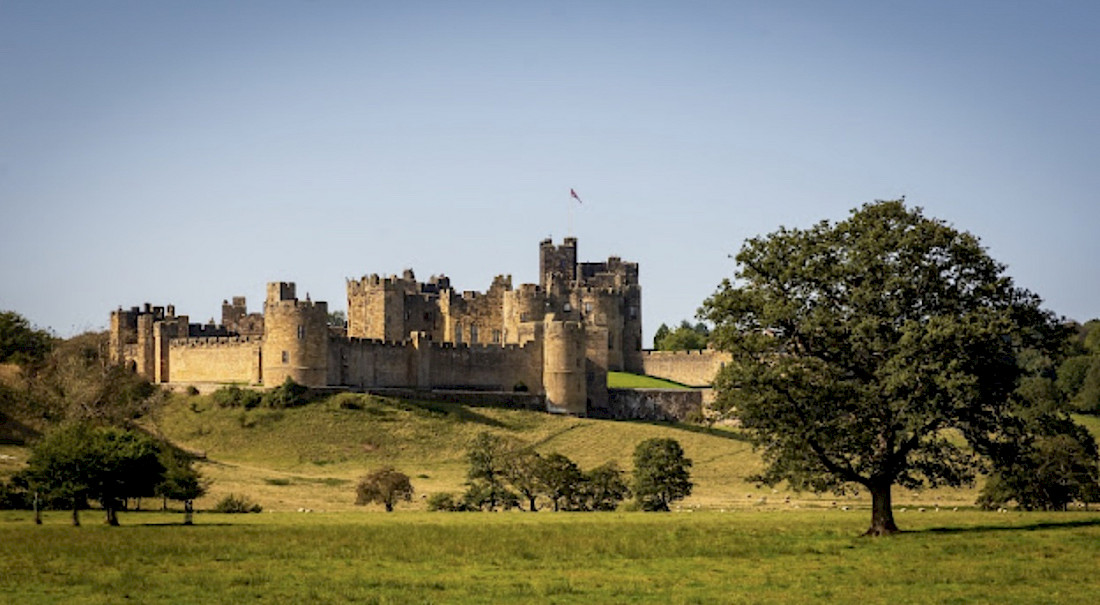
1) Alnwick Castle, Northumberland
Alnwick Castle is everything that your imagination envisions as a castle. It sprawls across the landscape with strong stone fortifications and is embellished by many battlements festooned with stone figures to confuse attackers. This has been the home of the Dukes of Northumberland for over 700 years and is the second-largest inhabited castle in the U.K. Today, it is the home of the Percy family, the 12th Duke and Dutchess of Northumberland, and their four children. This castle has evolved and expanded from its beginnings in 1309 as a Norman-style castle into what visitors see today. The interior of the castle contains priceless treasures of fine and decorative art, some pieces have been in this family for more than 900 years. A visit here gives visitors a glimpse of the continuity of family and how an ancient family lives in the 21st century. Alnwick isn’t only known for its history. This great castle was recently immortalized in the first two Harry Potter movies! It doubled as Hogwarts School of Witchcraft and was where Harry took off on his broom for the first time! It has also appeared in Downton Abbey’s Christmas specials in 2015 and 2016, and in Transformers: First Knight.
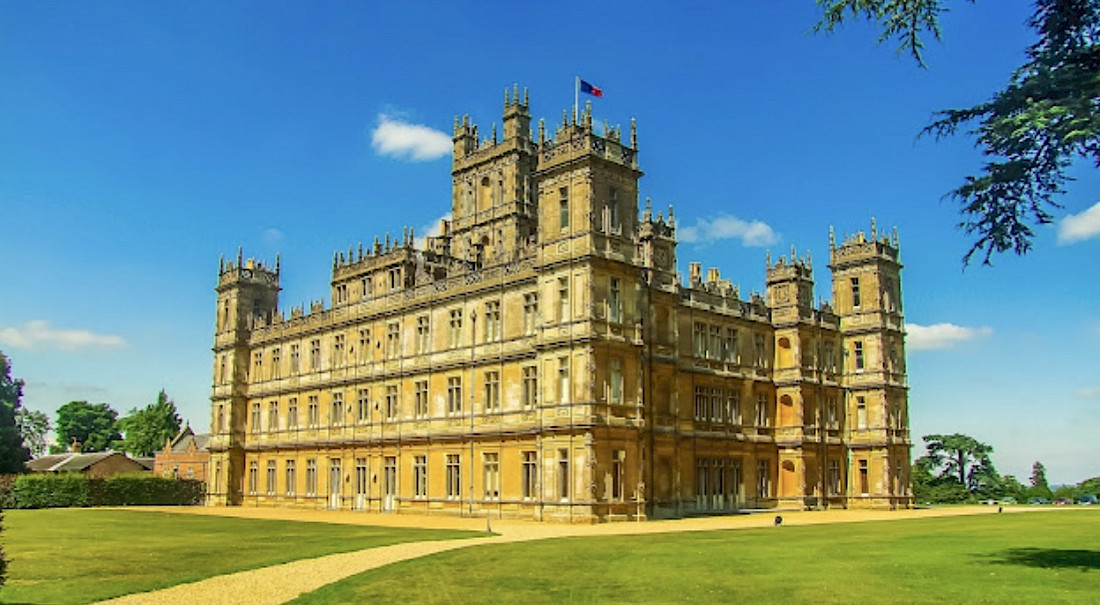
2) Highclere Castle, Hampshire
Downton Abbey fans will recognize this magnificent Victorian-style castle immediately. Constructed in the 19th century and perched amid the rolling hills of Hampshire’s countryside, Highclere has a storied past. Much like the plot line of Downton Abbey, this castle served as a hospital during WWI. In WWII, it was both a refuge and a home for children evacuated from London. One of its most famous occupants, George Carnarvon, 5th Earl of Carnarvon, financed the discovery of the tomb of King Tut by Howard Carter in 1922. Highlights of the castle tour are the Egyptian Exhibition downstairs (the kitchen in Downton Abbey was filmed elsewhere), wandering through the main state rooms so familiar to the “Crawley Family,” and exploring the magnificent gardens surrounding the castle. If you have worked up a thirst, be sure to have a cuppa in the Tearoom. Other films shot at Highclere include Robin Hood: Prince of Thieves, Eyes Wide Open, and The Secret Garden.
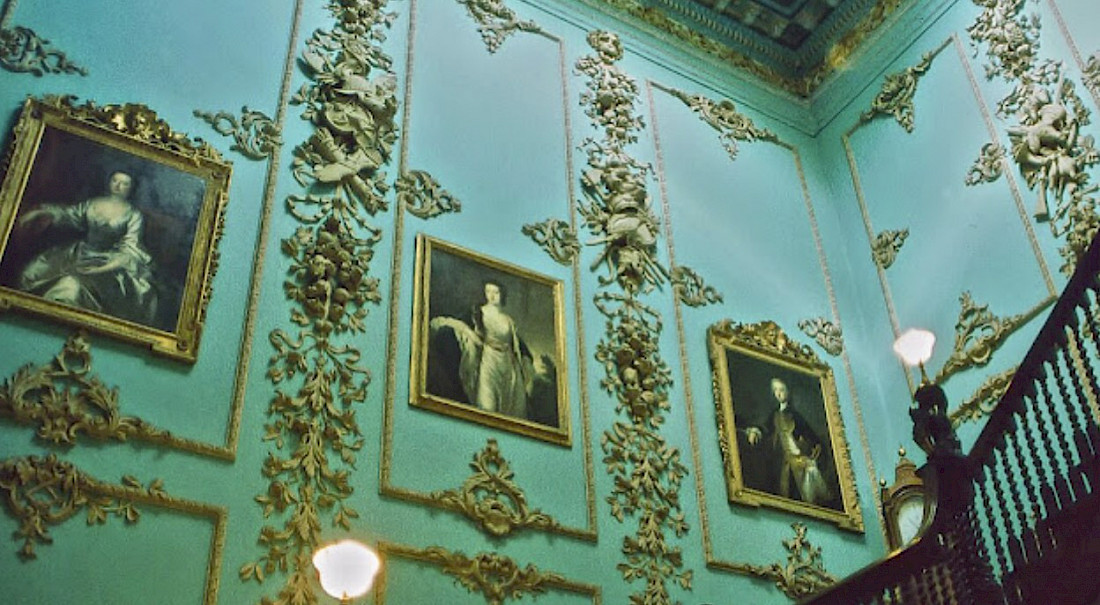
3) Powderham, Devon
This castle was constructed in 1391 by Sir Philip Courtenay, the first Earl of Devon, as a family home. Today, the 19th Earl of Devon and his family reside in their grand ancestral castle. Overlooking the River Exe, Powderham was originally, built as a medieval great hall. Through the centuries, the castle has evolved and adapted to the changing times. It has gone through Tudor, Georgian, and Victorian additions and enhancements. Powderham is notable because it is home to one of the most spectacular Rococo interiors in the country. The Courtenay family have always been collectors, and today’s treasures that fill the castle have been passed down through the generations. This is a perfect castle to visit for those who want a glimpse of the elegance of a bygone era. Woodland walks and formal gardens add to the ambiance of this 3,500-acre estate that was once 50,000 acres. Powderham’s staircase, halls, music room, and master bedroom were used as locations for the blockbuster film, The Remains of the Day with Sir Anthony Hopkins, Christopher Reeves, and Emma Thompson.
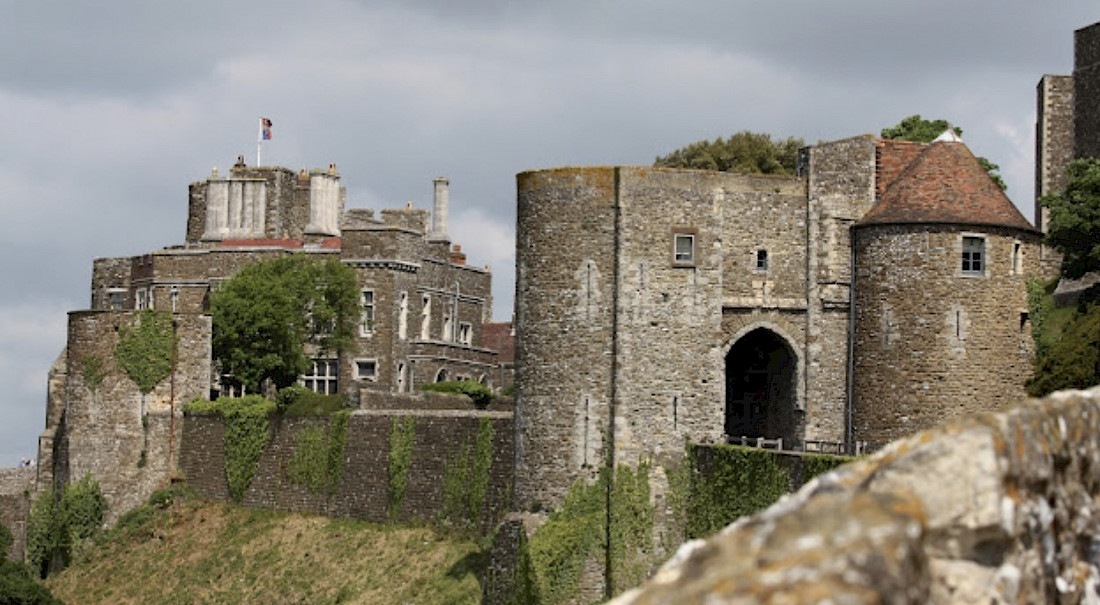
4) Dover Castle, Dover, Kent
Often called, “the Key to England,” this 11th-century castle was originally built to protect England because of its strategic location. Perched on the White Cliffs, close to the English Channel, Dover Castle played an important role throughout England’s wartime history. Dover’s unique defensive location, being only 21 miles from France, is the shortest sea crossing from England to continental Europe. Here, visitors can climb the Great Castle Tower to discover the medieval court of Henry II and Queen Eleanor of Aquitaine, explore the network of secret tunnels used during WWII, and then visit the Underground Hospital to experience a WWII dressing station, operating theatre, wards, and corridors. A highlight is to walk the battlements that were constructed in response to the rise of Napoleon, and afterward, discover the oldest surviving lighthouse in England, the Roman Pharos.
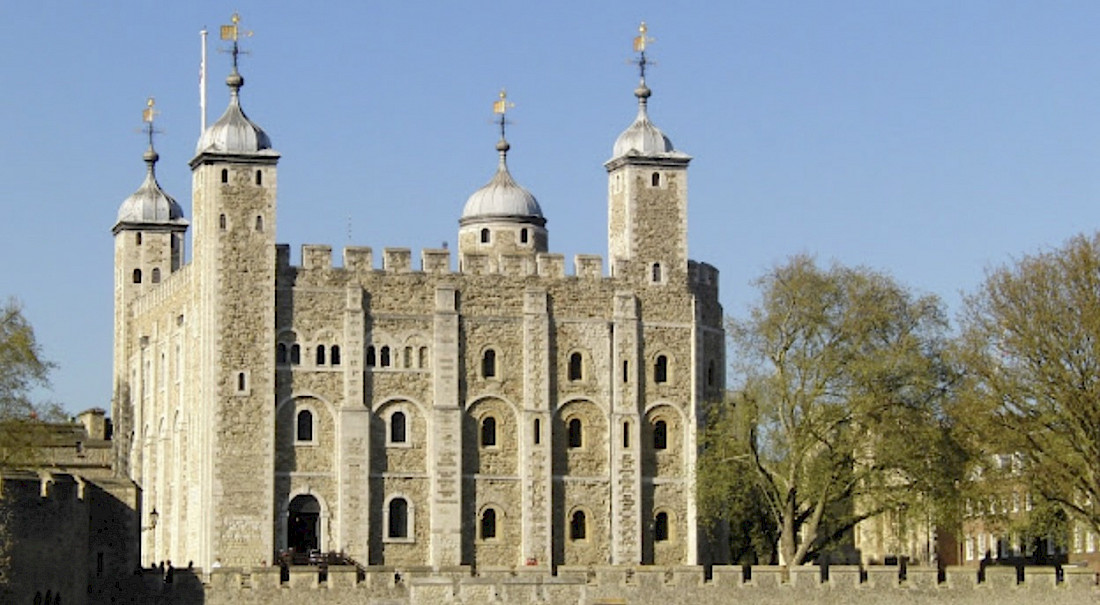
5) Tower of London
A UNESCO World Heritage Site, this imposing fortress, is a palace, a notorious prison, and one of England’s most iconic structures. There are layers of history to explore here. After all, it housed some of the most famous prisoners of British history including Elizabeth I, Guy Faukes, Anne Boleyn, Thomas Moore, Sir Walter Raleigh, and the Kray twins. Don’t miss the Traitors Gate, the Yeomen Warders, the Ravens, and the scaffold site of Queen Anne Boylne and Queen Catherine Howard, wives of Henry VIII, and Lady Jane Grey, who led an ill-fated attempt to take the throne. The mystery of the Bloody Tower is always intriguing because it is here that many believe King Edward V and his brother were murdered in 1483. A highlight of a visit to the Tower of London is to see the sparkling Crown Jewels, worn by the King at the State Opening of Parliament. Located in the center of the Tower of London, is the imposing White Tower, an excellent example of Norman architecture. Here you will find a Romanesque chapel, the Royal Armories, the Line of Kings, and the armor of Henry VIII, Charles I, and James II.
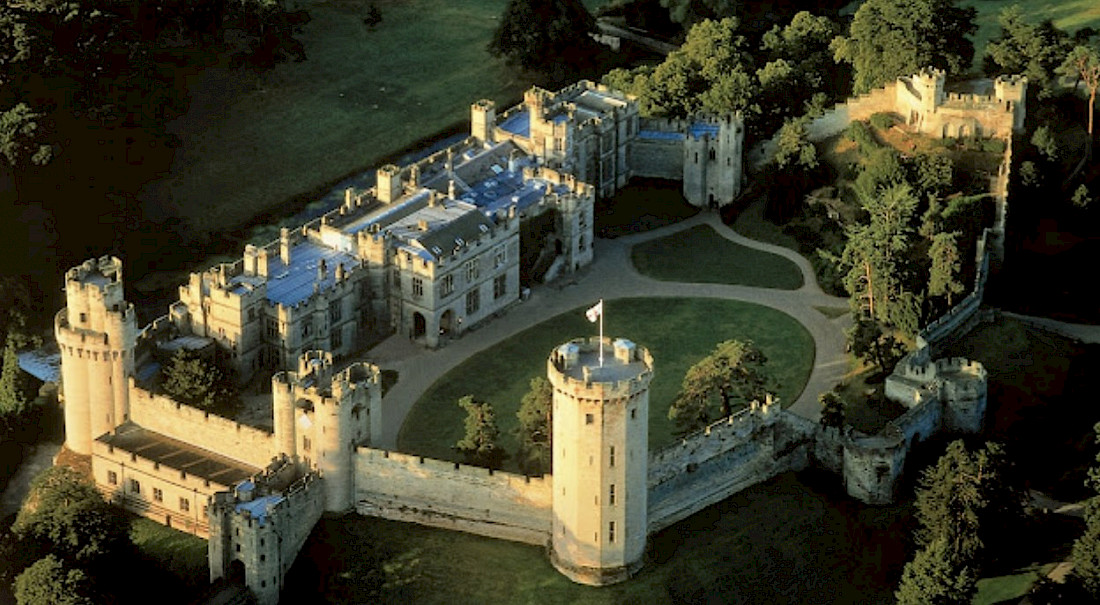
6) Warwick Castle, Warwick
Located on a sandstone bluff overlooking the River Avon, this medieval castle was expanded many times from the original defensive fort that was built in 1068. Today, Warwick is renowned as one of the best-preserved castles in all of England. A tour of the interior gives guests the chance to experience the opulence of a bygone era with each room telling the story of the castle’s ownership through time. The State Dining Room has hosted British Royalty from Queen Victoria to Queen Elizabeth II. The Great Hall documents six centuries of culture and history, and the drawing rooms and bedrooms, including Queen Anne’s, are perfect examples of period life through the ages. Visitors are encouraged to climb the towers and walk the ramparts that offer splendid views of the surrounding countryside.
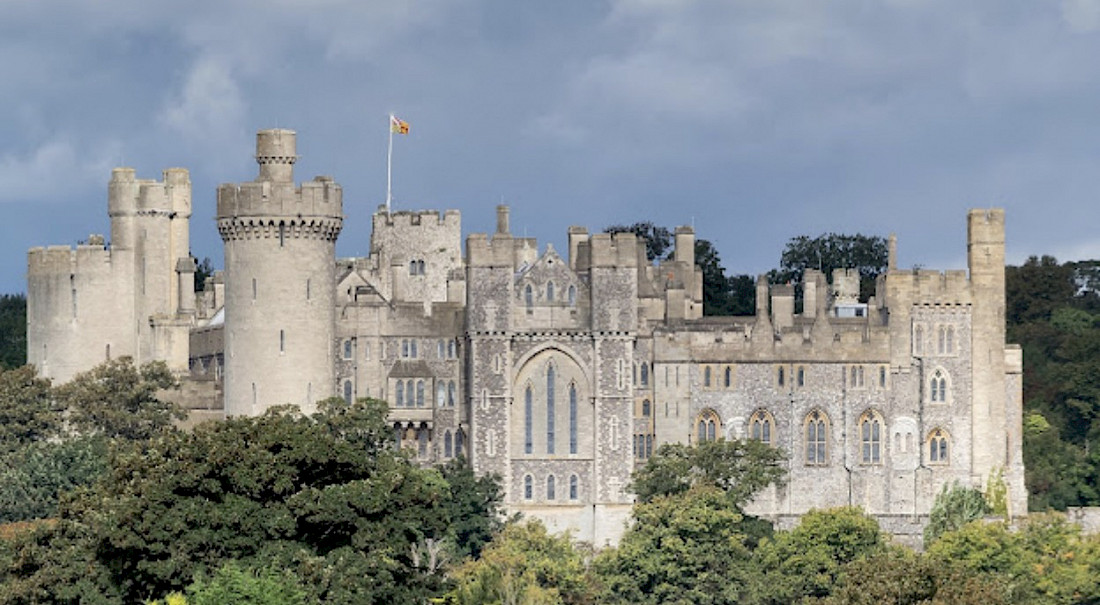
7) Arundel Castle, West Sussex
Still a family home, this castle, perched overlooking the River Arun showcases more than 1,000 years of history. It was built by Roger de Montgomery, Earl of Arundel in 1067, and has descended directly from 1138, by female heiresses to the present day. It has been the seat of the Dukes of Norfolk for more than 850 years, and today, it is the family home of the 18th Duke of Norfolk. The Duke of Norfolk is also the Earl Marshal, a title held for more than 500 years. At Arundel, you will discover a treasure trove of priceless works of art, antique furniture, and porcelain, fabulous sculptures as well as pieces of armor. Wander through the State Rooms, Drawing Rooms, the Regency Library, and the grand Barons’ Hall transformed during the 18th and 19th centuries. See the opulent Victorian-decorated bedrooms with their quaint Edwardian bathrooms and, don’t miss the Fitzalan Chapel, built in 1380 by the 4th Earl of Arundel. Because it was originally built as a fortress, you can still tour the inner Gatehouse and Barbican as well as the Keep, with its narrow passages and astounding views.
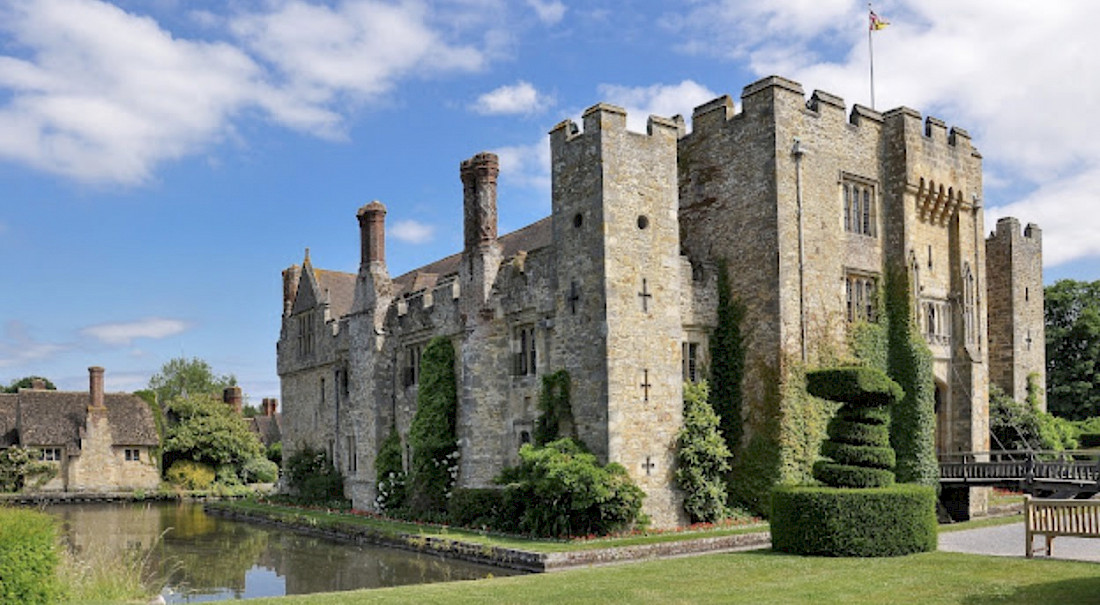
8) Hever Castle, Kent
Dating to the 14th century, Hever Castle was the childhood home of Anne Boleyn, the second wife of King Henry VIII, and mother of Queen Elizabeth I. Their marriage changed England’s religious history dramatically after Henry divorced his first wife. Hever Castle has a romantic setting with its double moat and award-winning gardens that are breathtaking. Inside the castle, the paneled rooms contain priceless antique furniture, tapestries, and paintings that tell the story of the War of Roses and the Reformation periods. A highlight is the collection of Tudor portraits said to be the best in the world after the National Portrait Gallery’s collection. Much of what visitors see today is due to the 20th-century restoration financed by William Waldorf Astor, a scion of the very wealthy Aster family, of New York City.
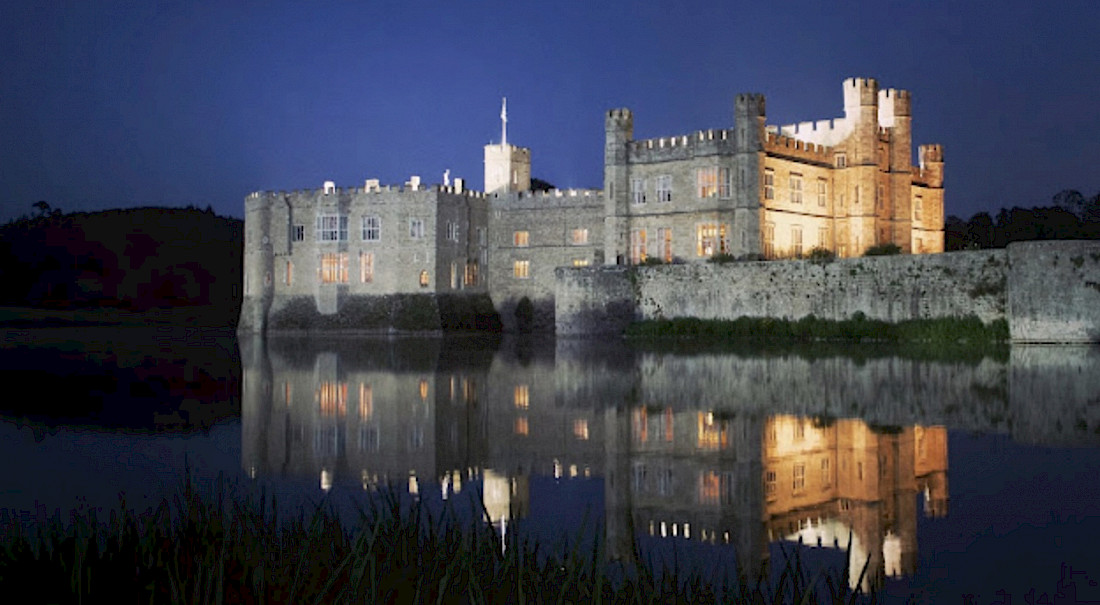
9) Leeds Castle, Kent
This fairytale-like castle is also known as “the Lady’s Castle” because seven Queens made it their home from Queen Katherine of Aragon to Queen Catherine De Valois, wife of Henry V. For a change of pace, from royal history, this castle also tells the story of its renovation in the 1930s by Anglo-American, Lady Baillie, an heir to the Standard Oil riches. She is not only credited with saving the castle, but she was also responsible for transforming its interiors using some of the most talented French designers of that time. During the 1930s, statesmen, actors, actresses, and European Royalty were lavishly entertained. Although the parties carried on during WWII, Leeds was also a hospital and was used to treat many severely burned pilots. Upon Lady Baillie’s death in 1974, the castle was bequeathed to a charitable trust enabling it to be open to the public. Today, visitors can explore the interior of the castle which is beautifully appointed, and wander through the underground grotto, the outdoor maze, and a terraced Mediterranean garden, a favorite of Lady Baillie. Unusual highlights include a Dog Collar Museum and a Bird of Prey Center.
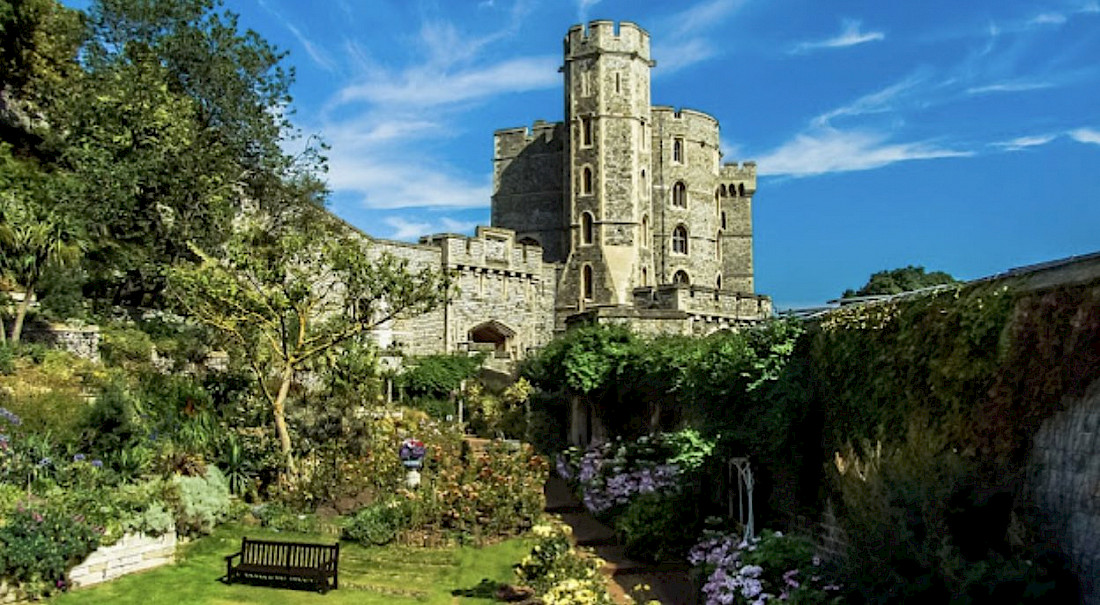
10) Windsor Castle, Berkshire
Windsor is the most iconic castle in the land. This royal residence never disappoints. It is the biggest castle in England and the oldest occupied castle in the world. It has been home to British Kings and Queens for more than 1,000 years. Walk in the footsteps of history on the tree-flanked avenue that is usually lined with people during state occasions like the wedding of Prince Harry and Meghan Markle, and Queen Elizabeth II’s funeral. On the grounds, and not to be missed, is St. George’s Chapel, the final resting place of Queen Elizabeth II. A tour inside this Royal Residence echos with the murmurs of state dinners and ceremonies, happy times and sad times, lavish banquets, and the everyday life of the Royal Family. Highlights of the tour include the lavish State Apartments and Ceremonial Rooms, semi-state Rooms, Queen Mary’s Doll House, seeing the Changing Guard, and visiting the Moat Room. Throughout the castle there is an impressive and priceless collection of paintings, sculptures, arms and armor, antique furniture, and decorative objects.
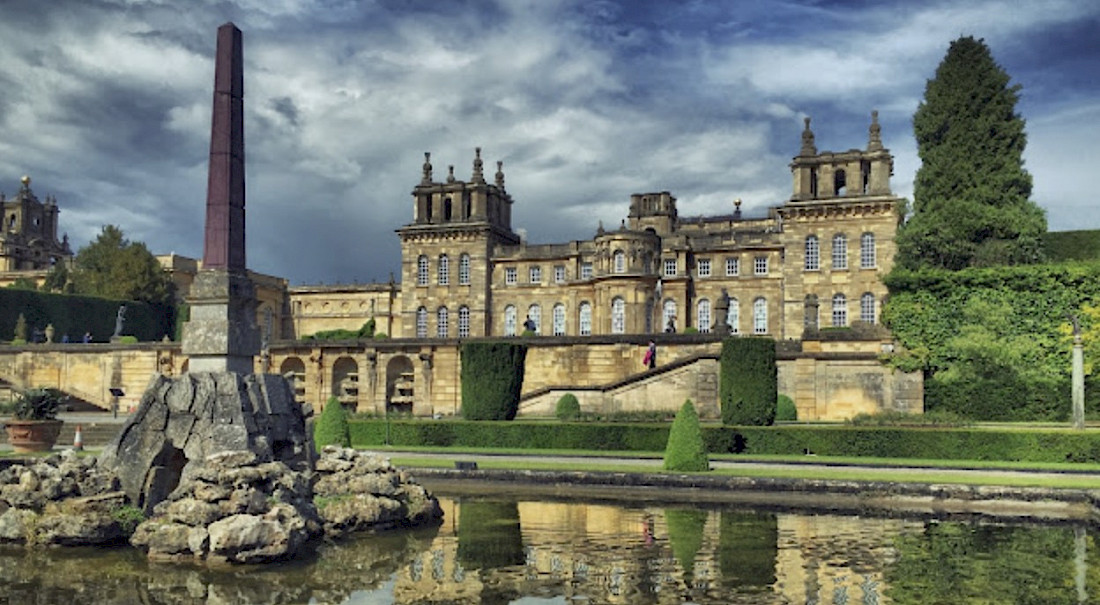
11) Blenheim Palace, Woodstock
Blenheim is the only non-royal castle in England that boasts the title of “palace.” It has the distinction of being a masterpiece of 18th-century Baroque architecture as well as being a UNESCO World Heritage Site. It was built for John Churchill, the 1st Duke of Marlborough as a gift from Queen Anne, for his victory in the Battle of Blenheim in 1704. It was saved from ruin and renovated by Consuelo Vanderbilt, an American socialite of Newport fame. At her mother’s urging, Consuelo married the 9th Duke of Marlborough against her will and later divorced him. Blenheim was the birthplace of British Prime Minister, Sir Winston Churchill, his paternal grandfather was the 7th Duke of Marlborough. Today it is the home of the 12th Duke of Marlborough, Charles James Spencer Churchill. A portion of the house is open, and an audio tour leads visitors through many amazing rooms. An upstairs and downstairs tour is also offered. A walk around the grounds designed by Capability Brown and described as a naturalistic Versailles and a visit to the Churchill Museum and Stables round out the experience. If time allows, take a horse and carriage ride around the formal gardens whose highlights include the rose garden, the secret garden, the cascades, and Churchill’s Memorial Garden. Interestingly, the land belongs to the King of England, and the Duke has paid rent on it for more than 300 years.
If you are planning a trip to England and enjoy history, make sure at least one of these magnificent castles or palaces is on your bucket list. As for favorites, it is difficult to choose just one!
Tips for Visiting Castles in England
Visiting English castles is an incredible experience, but it’s important to plan ahead to make the most of your trip. Here are a few tips to ensure a smooth and enjoyable visit:
1) Check opening hours: Before visiting a castle, check the opening hours and any restrictions that may be in place. Some castles may have limited hours during certain seasons or may be closed for renovations or events.
2) Take a guided tour: Many castles offer guided tours that provide a deeper insight into their history and significance. Consider joining a guided tour to make the most of your visit and learn fascinating stories and facts about the castle.
3) Dress appropriately: Some castles may have uneven terrain, steep staircases, or outdoor areas, so it’s important to wear comfortable shoes and dress appropriately for the weather. Layered clothing and a waterproof jacket are recommended, as some castles can be drafty or exposed to the elements.
4) Bring a camera and binoculars: UK castles offer stunning photo opportunities, so don’t forget to bring your camera to capture the beauty of these historic sites. Binoculars can also be handy for admiring distant views or architectural details.
5) Respect the castle’s rules: While exploring a castle, be sure to follow any rules or guidelines that are in place to protect the site and ensure the safety of visitors. Avoid touching any artifacts or climbing on restricted areas unless permitted.
6) Support the castle: Many castles rely on visitor revenue to fund their maintenance and preservation efforts. Consider purchasing souvenirs or making a donation to support the castle’s ongoing conservation.
